And on a hot day, and in the gloomy to enjoy watermelon, and the melon is not happy. But before you have to so much. After all, there is enough care, especially if summer is non-jarous yes short. Here and seedlings are required to raise, and make a greenhouse, and choose the right varieties. To varieties, and look. This is what the Watermelon and Melon are told by the employees of the Bykovskaya Bakhcheva Selection Station.
Watermelon
It has wonderful healing and dietary properties. The nutritional value of watermelon is determined by the high content of carbohydrates, pectins and vitamins, and due to the salts of iron, phosphorus and zinc Lodods of watermelon doctors 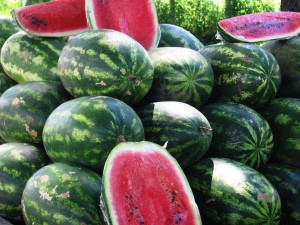 recommended with anemia, diseases of the kidneys, liver and gallbladder.
recommended with anemia, diseases of the kidneys, liver and gallbladder.
A large connoisseur of traditional medicine M. A. Nosal did not accidentally said: "Watermelons are this kind of food, which always helps and never harms, even in large doses."
All is well, yes, I will trouble: Fresh watermelons eat two of two months. Now, if we lengthen this period ... that the breeders of the Bykovskaya Bakhcheva station did, bringing new varieties of different maturation terms, firing, with high food and healing advantages.
Early watermelons include varieties with a period of vegetation of 65-80 days. Previously, others are kept for a meal of a tulip and flare. Tulip has a bright pulp, good taste, but it will not take him away. The flavor is covered with a solid crust, its taste quality is high. A little later, the fruits of the south-east range (the period of vegetation of 70-75 days) ripen. It takes the transportation of a watermelon of a chastock variety. The fruits are large, delicious.
Released at the station and medium grade magician - he and tasty, and lying. He is in the partner - earthlings - a variety of crops, resistant to diseases and good taste. The period from shoots to ripening is 80 days. With the use of seedlings and film shelters, watermelons can be obtained even in conditions of non-black earth.
Now about the average-weaker group. These include such varieties as the Melito-Polish 142 and Bykovsky 22, are damaged, squeezing, delicious, sustainable diseases. With these varieties, the anniversary 72 and Sinchevsky, distinguished by high yield and good taste. The period from germination to ripening fruits is 85-90 days. Who would like to taste the watermelons in October-November, can stop his choice for extreme scene varieties, aqueal and salute.
Their fruits are stored up to 2.5 months. But the strongest and flexible watermelons are Volzhsky, chill and bush 334 - stored before the new year. And what large - other pulls up to 20 kg! As they say, you get on, get drunk and die. And that is important, the bustic 334 grade plants are compact, the disassembly of the weaves do not require. And it became, and take up little space.
Melon
Melon is not joy, but a help to vegetables and fruit. Not only delicious melon, but also curative, nutritious. In its fruits - both sugar, and vitamin C, and useful rice, as well as pectin substances and 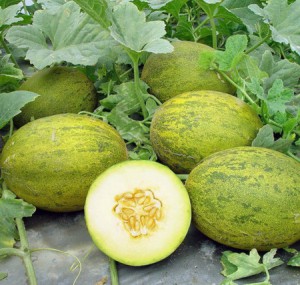 mineral salts. Dietary doctors prescribe a melon with cardiovascular diseases, anemia, liver disease and kidney. And traditional medicine recommends this sweet fruit from cough, rheumatism. Finding a melon even in cosmetics: Oriental beauties wash the decoction from her pulp. Who squirmy nerves, melon helps to calm down. A juicy fruit is great quenching thirst.
mineral salts. Dietary doctors prescribe a melon with cardiovascular diseases, anemia, liver disease and kidney. And traditional medicine recommends this sweet fruit from cough, rheumatism. Finding a melon even in cosmetics: Oriental beauties wash the decoction from her pulp. Who squirmy nerves, melon helps to calm down. A juicy fruit is great quenching thirst.
Melon is prepared excellent jam, candied fruit, fruit mousse. The pulp vyalyat pieces in the sun, getting extremely sweet, original product - an incomparable delicacy. Of melon seeds are edible oil, sunflower not worse. Maybe because some growers, artisans and say that melon - a serious, rich culture.
In the hands of modern melon growers have a set of high-yielding varieties of melon different ripening, remarkable taste and dietary properties. About half the sweet fruits do not go off the table, but because they are not translated and canned whole year.
Breeders derived experimental stations varieties of melons, suitable for different areas of the country. Here is some of them.
Bykovskaya 735. Variety is middle-yielding, vegetation period lasts 89-96 days. Fruits are medium-sized (1.6-1.8 kg), but sugar and delicious.
Sunny. The variety is mid-early, the vegetation period is 70-75 days. Fetal Weight 2 kg. Grade valuable taste, keeping quality. Resistant to disease. Dream. The variety is middle-growing period 83-94 days. Fruits small (less than 2 kg), sweet. Their high portability.
Rimma 89. Variety is middle-growing period of 90 days. Weight 1,4-2,1 kg marketable fruit. This melon is quite tasty and sweet. Transportability of fruits average.
From the middle-ripening breeds still call Rainbow and wintering 364/39. They are the fruit of the twenty pounds each. Taste qualities are good, the resistance of plants to fungal diseases is high. The fruits are suitable for long winter storage and transportation. And the longer they are stored the melons, the tastier they are. Time to taste - want more ...
Watermelon and melon in a greenhouse
In the greenhouses you can get 5-6 kg of fruit melon and watermelon from 1 m2 to 40 to 50 days earlier than in the open field. For greenhouse cultures were grown 20-30-day seedlings in pots sized 10x 10 or 12 × 12 cm. Melon variety Kara  kULYAB component mixtures consisting of three parts turf land and one part humus. Winter greenhouse seedlings grown since the end of January - beginning of February, and greenhouses for spring - late March. Seeds are sown in pots seedling (2-3 pieces in a pot).
kULYAB component mixtures consisting of three parts turf land and one part humus. Winter greenhouse seedlings grown since the end of January - beginning of February, and greenhouses for spring - late March. Seeds are sown in pots seedling (2-3 pieces in a pot).
Before the appearance of sections, the temperature is maintained at 30-32 ° C, after the appearance of shoots for 3-4 days it is reduced to 16-18 °, so that the seedlings are not pulled out and do not differ in black leg, then they are maintained at 25-30 ° , in cloudy weather in the afternoon about 20-22, at night 16-18 ° C. Relative air humidity is maintained at 50-60%. After the appearance of germs in pots leave 1 -
2 plants. If necessary, they are carried out on the morning and evening hours. Water seedlings moderately, not allowing soil moistening. 2-3 feeders are carried out: the first cow, diluted 8 times with water with the addition of 10 l 20-25 g of superphosphate or full mineral fertilizer (5 g of ammonium sulphate, 15-20 g of superphosphate, 10 g of potassium chloride); Subsequent - mortar of mineral fertilizers. Conduct grounds for the plants.
Seedlings are planted for a permanent place at the rate of 2-3 plants per 1 mA according to the scheme (80 + 40) x40 cm in the glass winter greenhouses in late February - early March, and in the film - in April. The best substrate for melted crops is a mixture of ferrous sublinous soil and humus (2: 1) with the addition of 5-10% river sand and mineral fertilizers at the rate of N45P6OK45. Pour plants in the greenhouses moderately, warm water (20-25 ° C), carry 2-3 feeders with mineral fertilizers (by 10 liters of water of 10-20 g of ammonium sulfate and potassium chloride and 30-40 g of superphosphate at the rate of 10 l to 15 m2). Feeding gives postlegolivov.
The culture of the Bakhchyev is leading in greenhouses on the trellis, the fruits are suspended in the nets. In plants, melons spend the sequel of the main weaves over the third real sheet and the side - over the fifth-sixth sheet. In plants, watermelon remove weak non-pronomous runs of second and third orders.





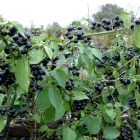
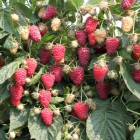
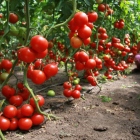
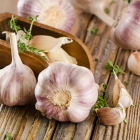
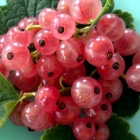
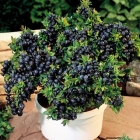
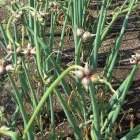
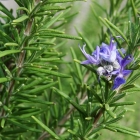
 Start a discussion ...
Start a discussion ...